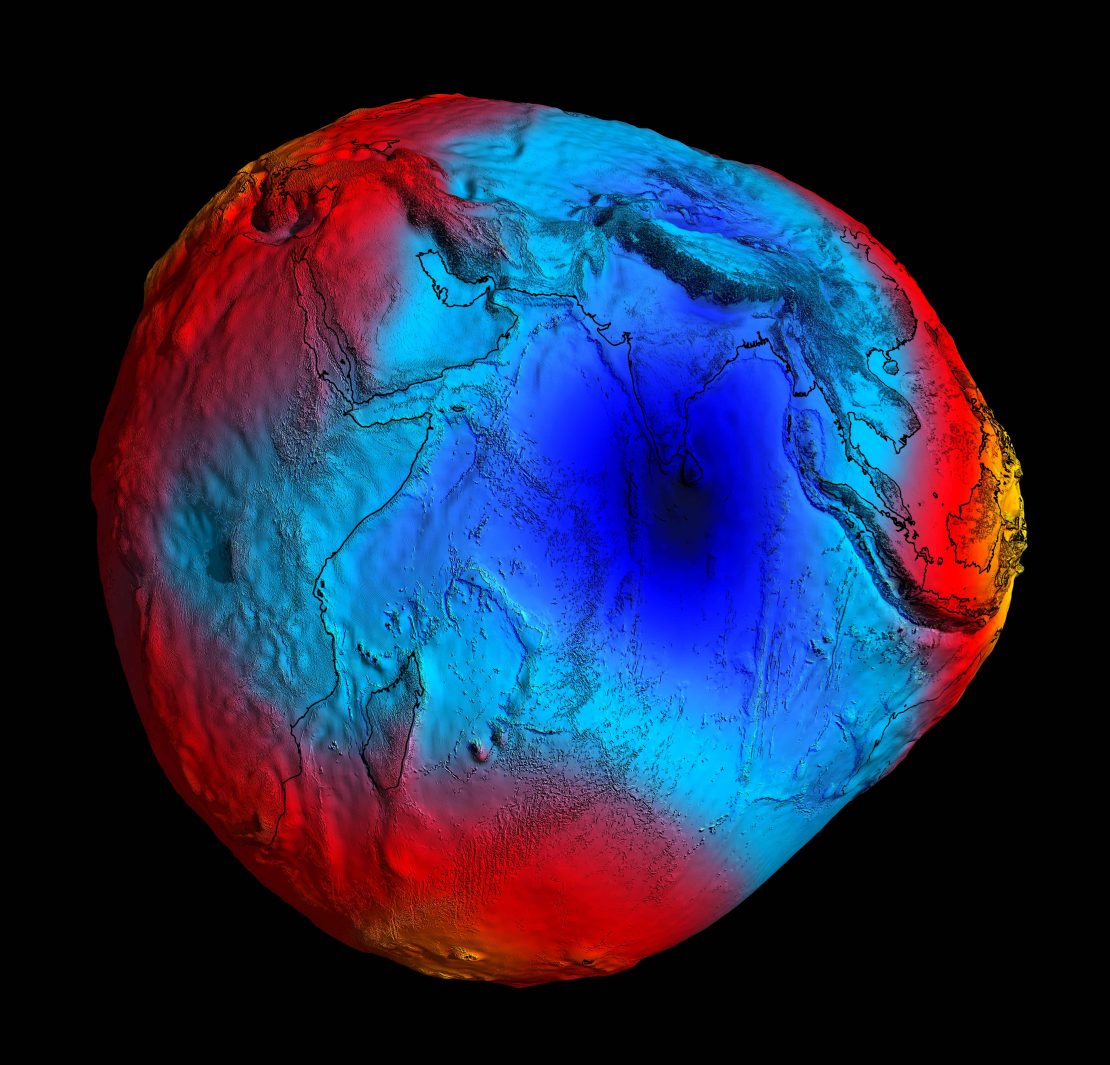In a groundbreaking discovery, researchers may have solved the mystery behind a ‘gravity hole’ in the Indian Ocean — where the Earth experiences a weaker gravitational pull, a lower mass than usual, and a significant dip in sea level of over 328 feet.
Using supercomputers to simulate how the area may have formed over a span of 140 million years– scientists at the Indian Institute of Science in Bengaluru concluded that a likely cause is the plumes of magma under the Earth’s crust. Magma plumes are similar to masses in the Earth’s mantle that create volcanoes. Scientists at the Institute and at the GFZ German Research Centre for Geosciences conducted the study in May 2023, published recently in the journal Geophysical Research Letters.
Dutch geophysicist Felix Andries Vening Meinesz first discovered this anomaly in 1948, during a gravity survey from a ship and it has left geologists scratching their heads for decades now. Basically, while we often think of the Earth as a perfect sphere, our planet is actually very bumpy and irregular, more accurately a geoid. There are places all over the planet with lower or higher gravitational pulls. So there are low-density “gravity holes” all over the planet, but the Indian Ocean geoid low (IOGL) stands out as the most significant—spanning 1.2 million square miles just off India’s southern coast. The geoid low has been around for about 20 million years, the team estimates and its future dynamics remain uncertain, as it may or may not disappear as the Earth’s tectonic plates shift.
The geology of the Earth also isn’t the same as it was years ago. As we know now, continents rest on massive slabs of rock called tectonic plates. These plates are always moving and interacting in a process called plate tectonics. Around 140 million years ago, India was in an entirely different part of the planet, completely separate from the Asian continent. There was an ancient ocean between the Indian plate and Asia, which eventually disappeared as India’s landmass drifted and collided with the rest of the continent. The magma plumes, that scientists believe might be the cause behind the gravity hole, themselves originated from this ancient ocean.
The study certainly has its flaws, as the study’s co-author Attreyee Ghosh herself tells CNN. Not all factors can be accounted for when creating a simulation like this, as we still don’t have a perfect idea of what the Earth looked like millions of years ago. But the overall reason now seems a lot more clear, and scientists finally have somewhat of an answer to a 75-year-old mystery.




